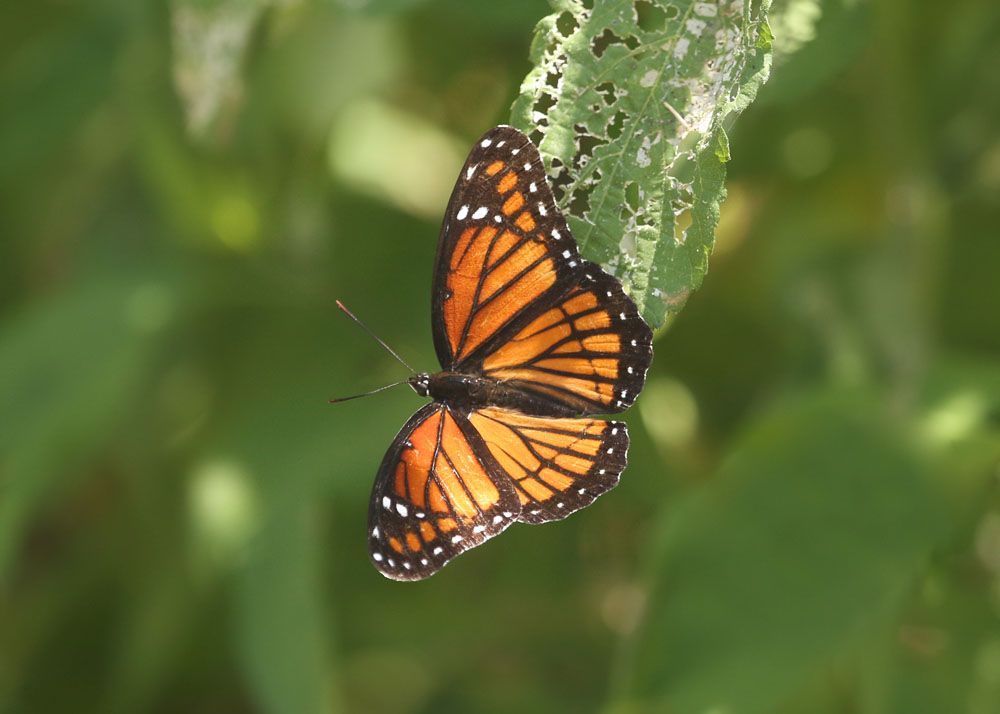
Viceroy – Limentis archippus
Viceroy – Limentis archippus
Scientific Name: Limentis archippus
Common Name: Viceroy
Distribution: The viceroy spans portions of Canada and Mexico in addition to the majority of the contiguous United States. Its range’s westernmost segment stretches from the Northwest Territories into central Mexico, following the eastern flanks of the Sierra Nevada and Cascade Ranges. Its easternmost range stretches from Nova Scotia into Texas along the Atlantic and Gulf coastlines of North America. It may have disappeared from California.
Host plants: The willow family of trees, which includes cottonwoods, poplars, and willows, is the food source for caterpillars. In addition to eating a wide range of flowers—composite flowers, mostly of the Limenitidinae family—adult viceroys also consume carrion, excrement, and rotting fruit.
Identification: A butterfly found in North America is called a viceroy, or Limenitis archippus. The viceroy was long believed to be a Batesian mimic of the monarch butterfly, but Müllerian mimicry has recently replaced this theory because the viceroy is also repulsive to predators. In 1990, the viceroy was designated as Kentucky’s state butterfly.
The viceroy has a wingspan of 53–81 mm (2.1–3.2 in). Similar to the Monarch (Danaus plexippus), the Viceroy’s upper side is orange and black, with the exception of a black line across the hindwing and a single row of white dots in the black marginal band. Viceroys, who imitate the Queen but are brown rather than orange, live in Florida, Georgia, and the Southwest, areas where monarchs are scarce.
The viceroy flies with a glide and gradual flap pattern. Males engage in a perch-patrol activity, whereby they briefly rest on the ground or in low foliage before patrolling 20 meters to another perch. They keep acting in this way while passing through the same region. When two guys cross paths in the same space, they will launch themselves 50 meters or higher into the air.
Life Cycle: In order to locate females, males spend the most of the day perching on vegetation or roving about the host plants. Only two or three eggs are laid on a plant by the female before moving on to another near the tip of the leaves of the host plant. After hatching, caterpillars consume their eggshells and then devour leaves and catkins at night. A ball of leaf fragments, feces, and silk is formed by young caterpillars and is suspended from the leaf they are eating on. This may deter predators. Third-stage caterpillars construct a winter residence out of curled leaf tips. The Viceroy is repulsive as well as a Mullerian impersonation of the Monarch.
Damage: The leaves of poplar and willow trees are consumed by the viceroy caterpillar. The viceroy butterfly consumes aster, golden rod, thistle, and carrion in addition to fungus and nectar from asters. It was formerly believed that the viceroy and king displayed Batesian mimicry, in which a benign species imitates a harmful one. According to research done in the early 1990s, the viceroy and the monarch are genuinely instances of Mullerian mimicry, a behavior in which two equally poisonous animals imitate one another for the mutual advantage of both.
